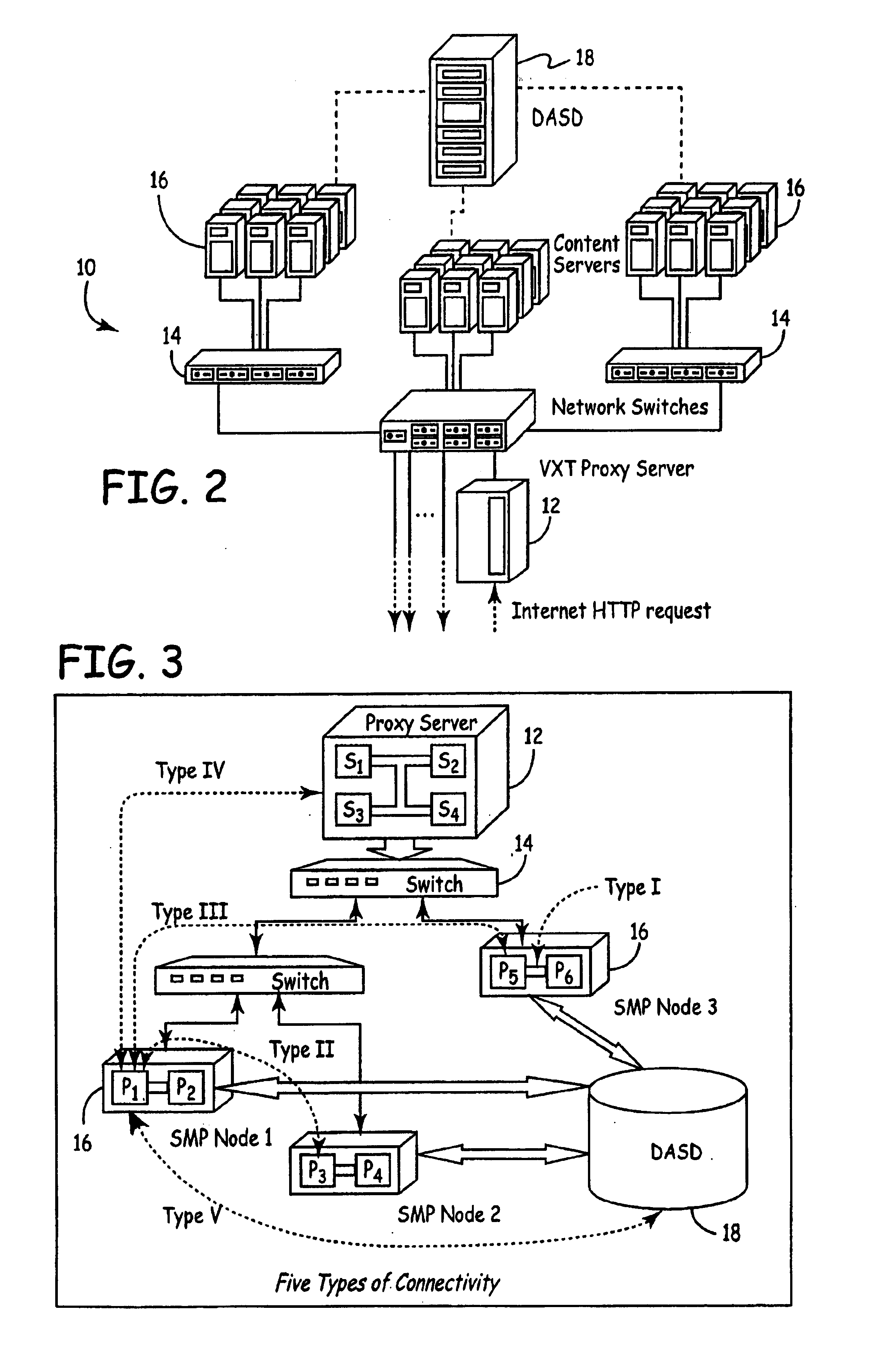System for balance distribution of requests across multiple servers using dynamic metrics
a dynamic metric and server technology, applied in the field of computer and digital processing systems, can solve the problems of user dissatisfaction, significant loss of business for e-business merchants, and permanent loss of many potential customers, and achieve the effect of maximizing the number of requests managed per second, reducing the number of requests, and improving the overall performance of the si
- Summary
- Abstract
- Description
- Claims
- Application Information
AI Technical Summary
Benefits of technology
Problems solved by technology
Method used
Image
Examples
Embodiment Construction
[0020]FIG. 2 shows a typical configuration of a system (10) having multiple resources that may be allocated to respond to client requests received from the Internet. A proxy server(s) (12) receives the client request from the Internet and using the VXT (100), as will be described shortly, distributes those requests via network switches (14) to one of the multiple content / application servers (16) which preferably have access to a common DASD storage unit (18) on which information pertinent to the client requests may be stored. As will be discussed in connection with FIG. 3, it will be understood that the present invention is applicable to numerous configurations of server resources in a system (10). In one embodiment as described in the previously identified applications entitled “Scalable Internet Engine” and “Method and System For Providing Dynamic Host Service Management Across Disparate Accounts / Sites”, servers are dynamically allocated among multiple sites or accounts. In this e...
PUM
 Login to View More
Login to View More Abstract
Description
Claims
Application Information
 Login to View More
Login to View More - R&D
- Intellectual Property
- Life Sciences
- Materials
- Tech Scout
- Unparalleled Data Quality
- Higher Quality Content
- 60% Fewer Hallucinations
Browse by: Latest US Patents, China's latest patents, Technical Efficacy Thesaurus, Application Domain, Technology Topic, Popular Technical Reports.
© 2025 PatSnap. All rights reserved.Legal|Privacy policy|Modern Slavery Act Transparency Statement|Sitemap|About US| Contact US: help@patsnap.com



